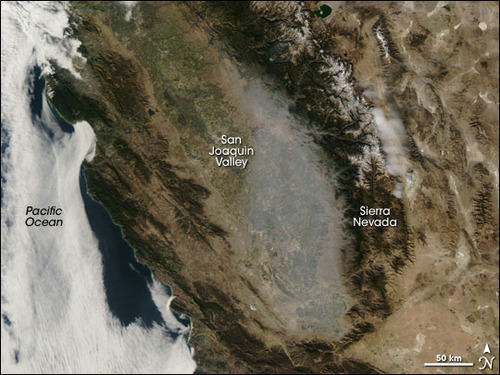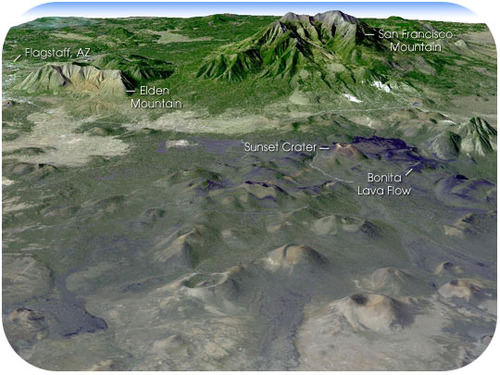2.6: Elevation
- Page ID
- 5327
Where are you in the third dimension?
Mt. Sheridan in Yellowstone National Park is higher above sea level than most locations. It is at 10,250 ft (3,124 m). When you're up at that elevation, you definitely think about the third dimension. It is, of course, elevation, or height above sea level. You can see Mt. Sheridan in the opening image and on the map.
Elevation
As you know, the surface of Earth is not flat. Some places are high, and some places are low. For example, mountain ranges like the Sierra Nevada in California or the Andes in South America are high above the surrounding areas. An accurate location must take into account the third dimension. Elevation is the height above or below sea level. Sea level refers to the height of the ocean’s surface. This is the midpoint between high and low tide. Sea level can vary from place to place, but scientists base their elevation measurements on the average, or mean, sea level to make sure they have a standard reference point.
Topography
We can describe the topography of a region by measuring the height or depth of that feature relative to sea level (Figure below). You might measure your height relative to your classmates. When your class lines up, some kids make high “mountains,” while others are more like small hills!
This is a satellite image of California. The highs, like the Sierra Nevada mountains, are rocky looking. During the winter, the peaks are capped with snow. The lows, like the San Joaquin Valley, are lighter and smoother. Green indicates forest.
Relief, or terrain, includes all the landforms of a region. For example, the image below shows the San Francisco Peaks in northern Arizona (Figure below). Features on the map include mountains, hills, and lava flows. You can recognize these features from the differences in elevation.
This image was made from data of the Landsat satellite. It shows the topography of the San Francisco Peaks and surrounding areas.
Summary
- Elevation refers to height above average sea level.
- The topography of a region describes its highs and lows.
- Sea level is the midpoint between high and low tide. It can vary around Earth.
Review
- What is elevation, and what is its reference point?
- How is topography different from relief?
- Why is the average, or mean, sea level used as a reference point?
Explore More
Use the resource below to answer the questions that follow.
- Why is elevation important?
- What is digital elevation data used for?
- What is the NED?
- What is the primary source of the NED's new elevation data?
- What else is LIDAR used for?
- Why is the continued funding of this project important?




